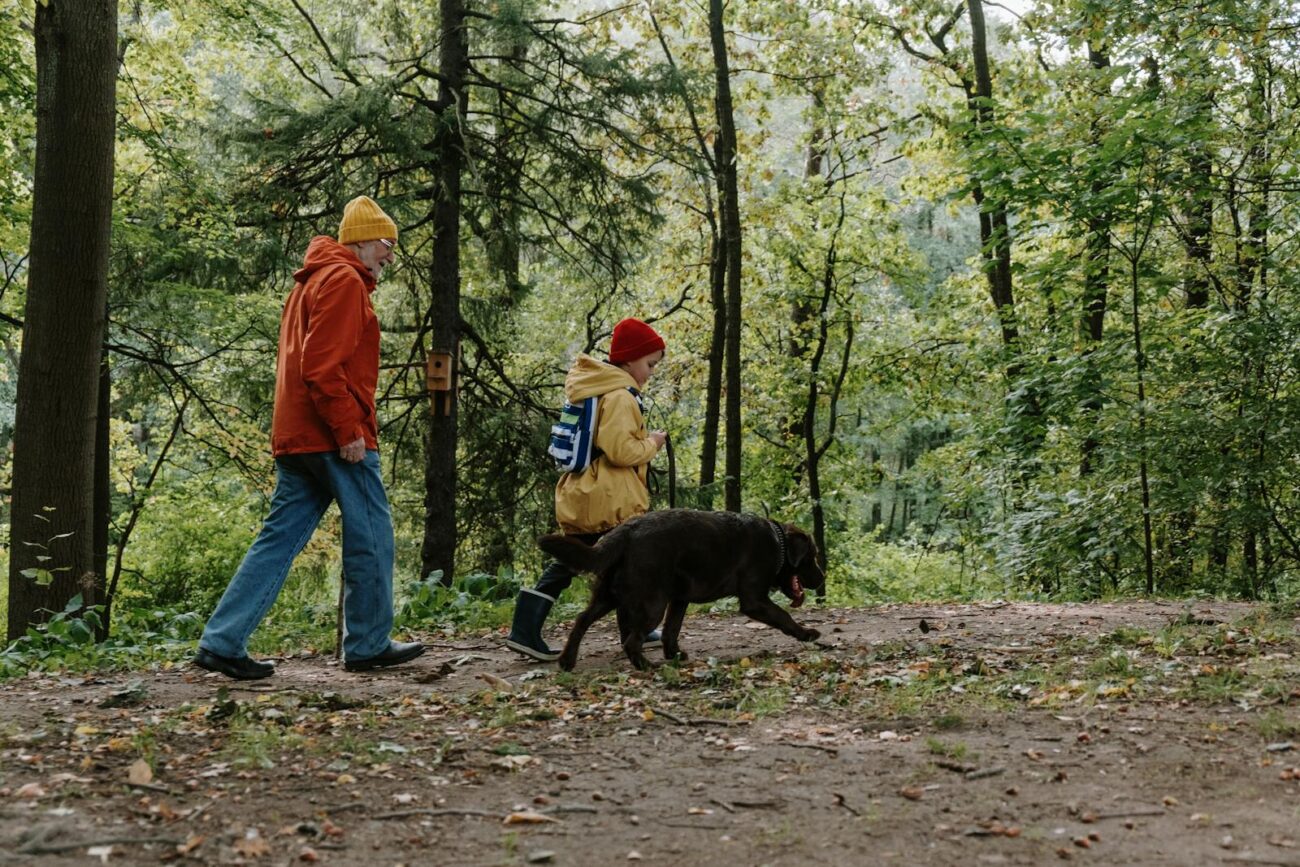Venturing into the great outdoors with family members of all species and ages can transform a simple excursion into an unforgettable adventure. However, preparing for trips with children and pets requires thoughtful planning to ensure safety, enjoyment, and meaningful experiences for everyone involved. Whether you’re planning a short hike, a weekend camping trip, or an extended outdoor vacation, accommodating the needs of your two-legged and four-legged companions will make the difference between a stressful ordeal and a joyful memory. This comprehensive guide will walk you through essential considerations, practical tips, and creative ideas to make your outdoor adventures accessible and enjoyable for kids and pets alike.
Understanding the Unique Needs of Kids and Pets Outdoors
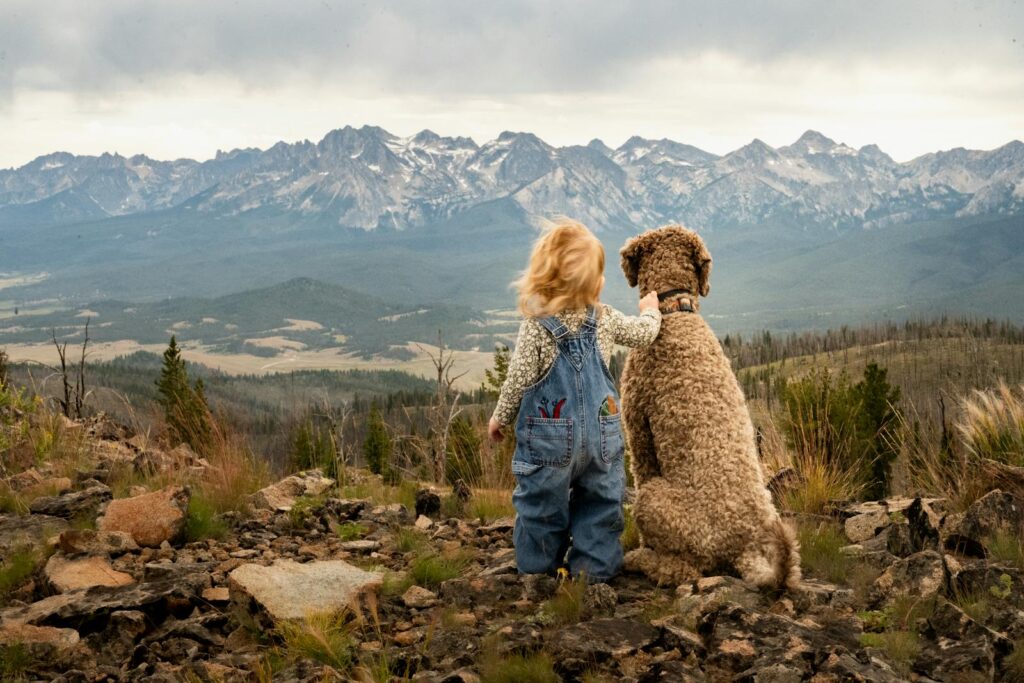
Children and pets share many similar needs when exploring nature, including more frequent breaks, careful monitoring for fatigue, and special attention to safety hazards that adults might easily navigate. Young children and animals alike experience the world primarily through sensory exploration—touching, tasting, smelling—which creates both learning opportunities and potential risks. They both tire more quickly than adults, with children needing mental stimulation along with physical activity, while pets may need more water breaks and rest periods. Understanding these parallels allows you to plan activities that accommodate everyone’s pace and abilities, creating a more harmonious experience. By recognizing these shared characteristics, you can develop strategies that address both groups simultaneously, making your planning more efficient and your adventure more enjoyable.
Choosing the Right Destination for All-Inclusive Adventures
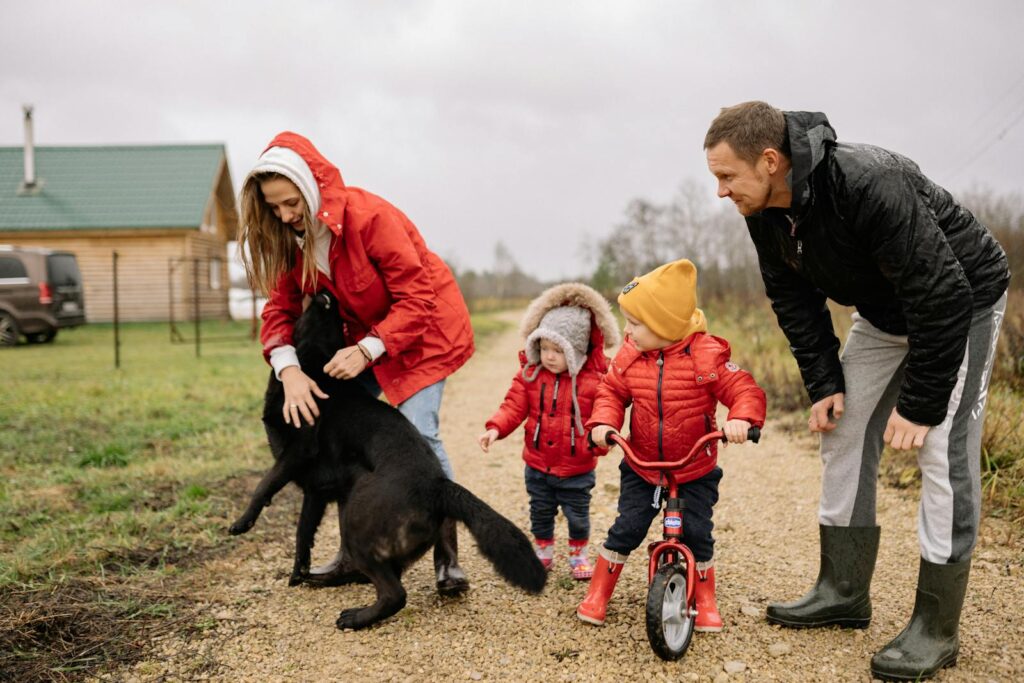
Selecting an appropriate destination forms the foundation of any successful family outdoor trip that includes pets. Research pet policies thoroughly before departing, as many national parks have strict regulations about where animals can go, while state parks and national forests often offer more pet-friendly trails and camping options. For beginners, choose locations with shorter, well-maintained trails, accessible facilities, and interesting natural features to keep children engaged. Look for areas with shade, access to clean water, and relatively flat terrain that won’t overtax small legs—whether human or animal. Online resources like AllTrails and BringFido allow you to filter locations based on kid-friendly features and pet policies, while also providing firsthand accounts from other families who’ve visited with similar companions. The ideal destination balances natural beauty with practical amenities, creating opportunities for exploration without overwhelming your youngest adventurers.
Essential Gear for Kid and Pet Safety
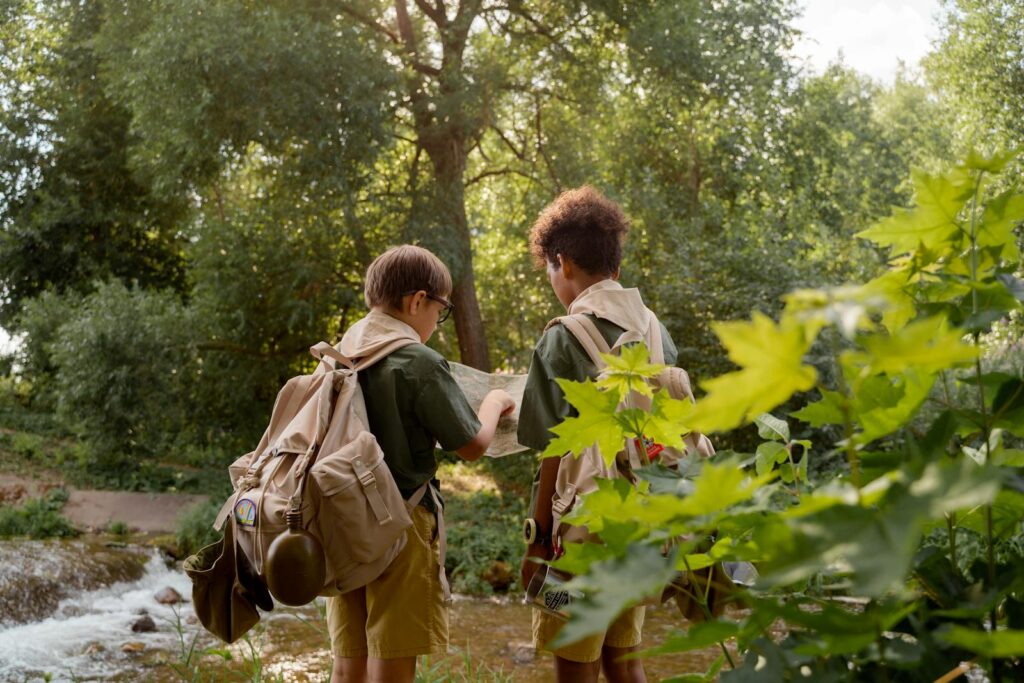
Properly equipping your family members of all species ensures both safety and comfort throughout your outdoor adventure. For children, invest in appropriately sized backpacks, supportive footwear, weather-appropriate clothing layers, and properly fitted helmets if biking or climbing activities are planned. Pet essentials include a sturdy leash (ideally 6 feet or shorter for better control), collapsible water bowls, waste bags, and a well-fitted harness rather than a collar for hiking to prevent tracheal injuries if they pull. Both kids and pets benefit from having identification—children should carry contact cards in their pockets or wear ID bracelets, while pets need updated tags and possibly microchips before venturing into unfamiliar territory. First aid supplies should address both human and animal needs, including tweezers for splinters and tick removal, antiseptic wipes, bandages in various sizes, and pet-specific items like styptic powder for torn claws. Quality gear prevents many common problems and provides peace of mind when you’re miles from civilization.
Packing Nutrition: Food and Snacks for Energy
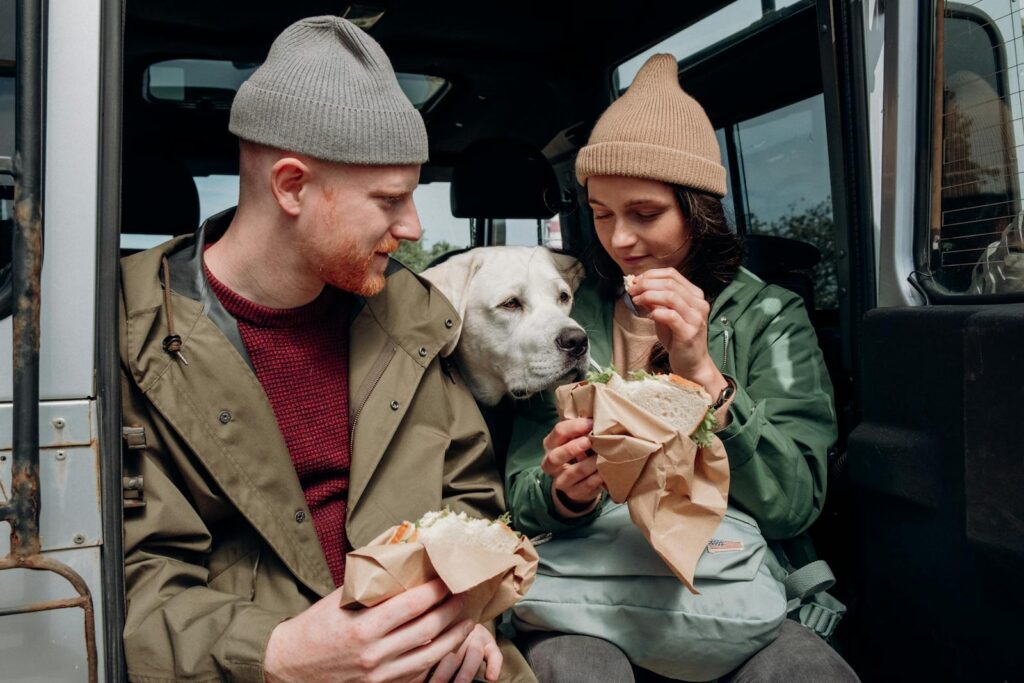
Maintaining energy levels through proper nutrition is crucial when outdoor activities increase caloric needs for both children and pets. Pack more food than you think necessary, as outdoor play and exploration can dramatically increase appetite for everyone involved. For children, include a mix of complex carbohydrates for sustained energy (trail mix, whole grain sandwiches), protein for muscle recovery (jerky, nut butters), and quick-energy foods like fruit for immediate boosts during challenging sections. Pets require their regular food, packed in sealed containers to prevent wildlife attraction, plus high-value training treats that can be used for reinforcement in new environments. Portable, nutrient-dense options work best—think squeeze pouches of applesauce for kids and freeze-dried meat treats for dogs that won’t spoil or crush in a pack. Remember that proper hydration works hand-in-hand with nutrition, so plan water intake alongside meals and snacks, scheduling regular breaks where everyone refuels together to maintain the group’s energy level throughout the day.
Hydration Strategies for Outdoor Adventures
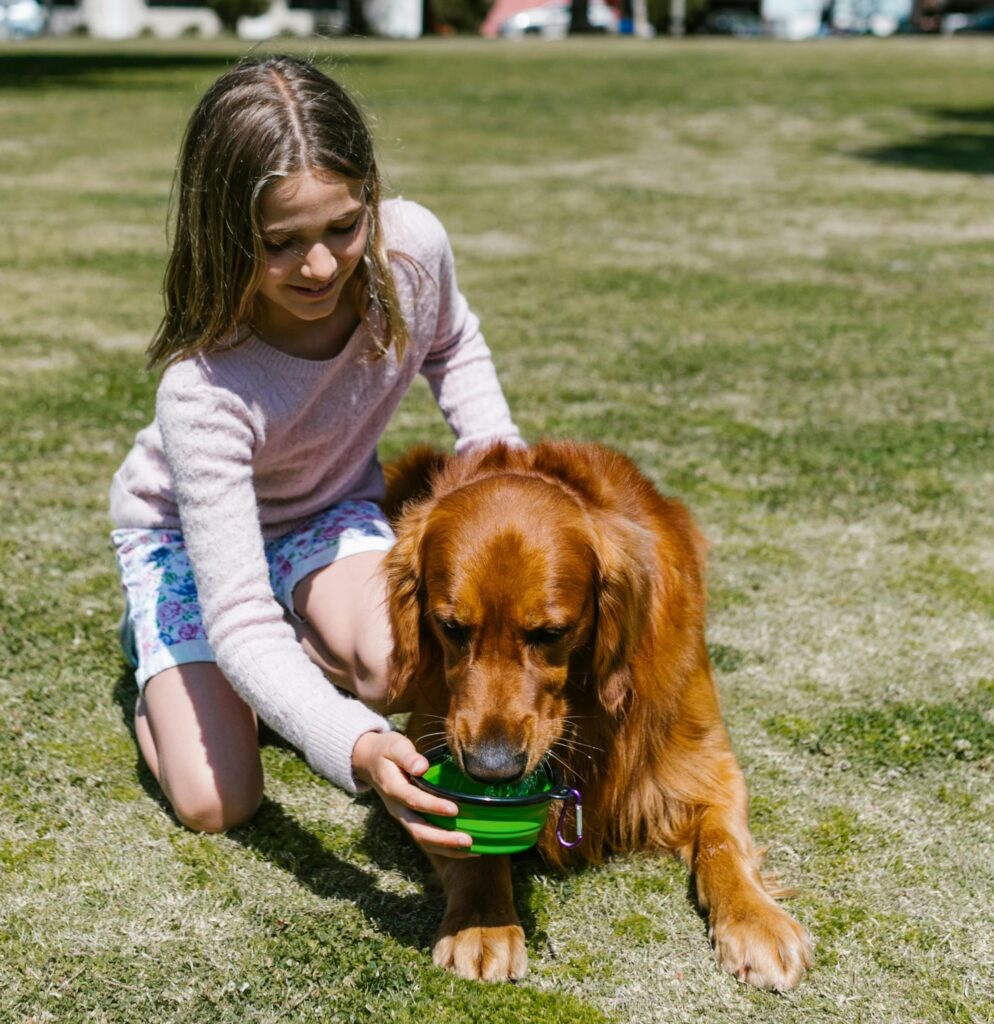
Water management becomes critically important when traveling with children and pets, as both dehydrate more quickly than adults and may not recognize their own needs. Establish a hydration schedule rather than waiting for thirst cues, which often appear too late, by setting regular water breaks every 15-30 minutes depending on temperature and activity level. Teach children to use hydration packs for continuous access to water, while carrying collapsible bowls for pets that can be quickly deployed when you spot a clean water source. For longer expeditions, consider water purification methods like filters or purification tablets that work for both human and animal consumption, ensuring you can safely refill from natural sources. Watch for signs of dehydration in both children and pets: dry mouth, decreased energy, reduced urination, and in pets, panting and thick saliva. During hot weather, carry water weight distributed among adult group members rather than reducing the amount, as adequate hydration prevents many outdoor emergencies and keeps the adventure enjoyable for everyone.
Creating Age-Appropriate Activities and Challenges
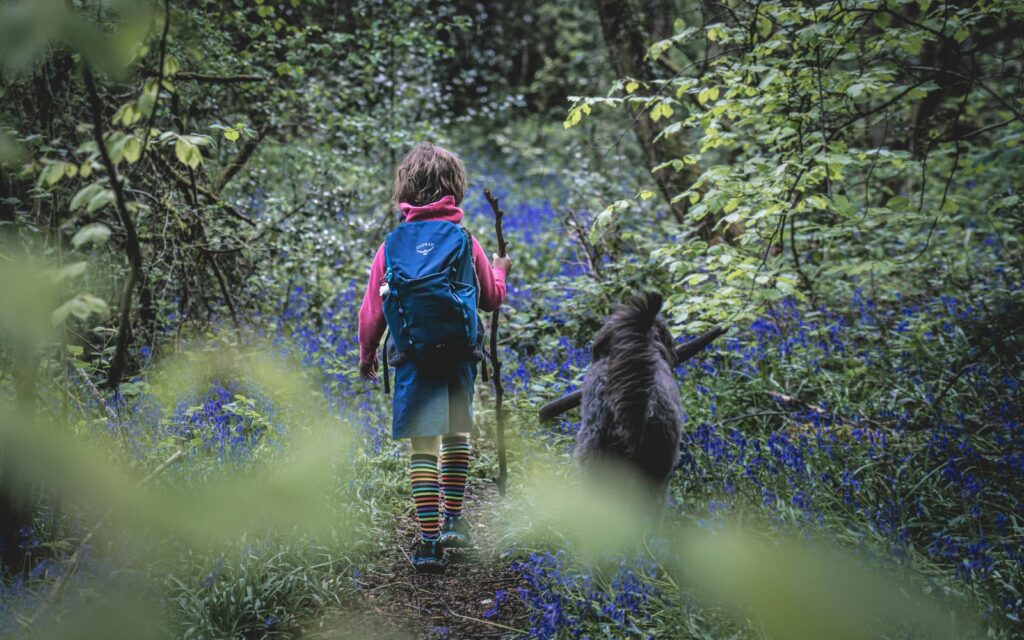
Engaging both children and pets requires thoughtfully designed activities that match their developmental stages and physical abilities. For toddlers and puppies, incorporate frequent sensory exploration stops where they can safely touch interesting textures, listen to natural sounds, and observe small wonders like insects or flowing water. School-aged children benefit from responsibility-building tasks like navigation with a simple map, wildlife identification with field guides, or being the designated photographer to document the journey. Athletic dogs and energetic children can participate in nature scavenger hunts where they search for items like “something smooth” or “something red,” adapting the complexity based on age and experience level. Create appropriate challenges that build confidence—a log to balance across for kids or a shallow stream crossing for water-hesitant dogs—while maintaining safety with close supervision. Remember that the pace will be determined by your youngest participants, so plan shorter distances with built-in activity stations rather than focusing solely on reaching a destination, making the journey itself the primary adventure.
Managing Weather Conditions and Temperature Extremes
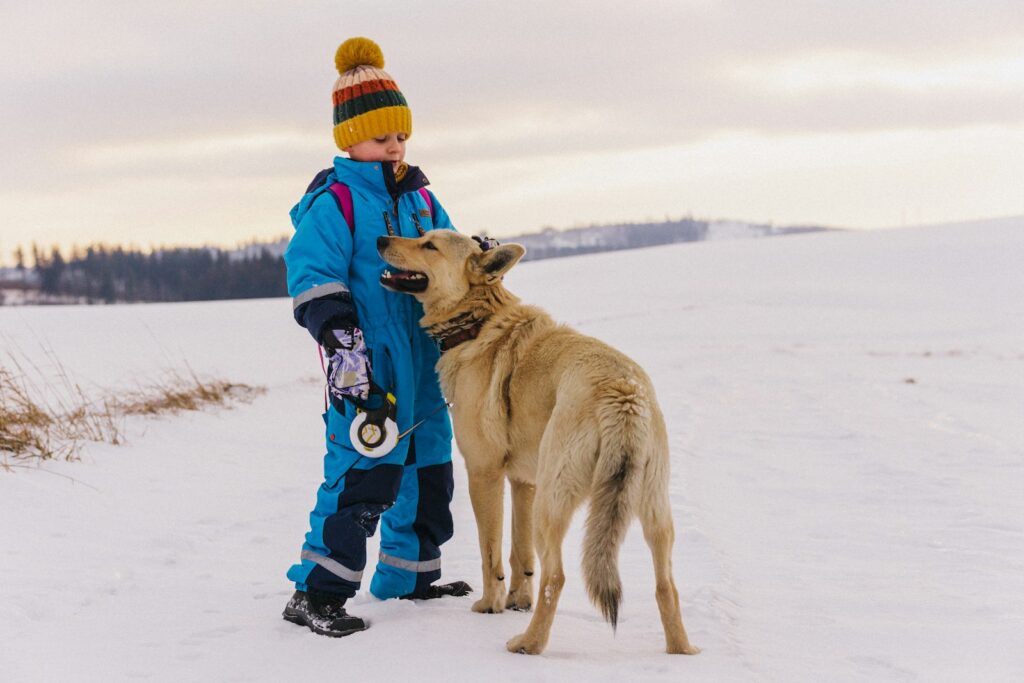
Children and pets share vulnerability to temperature extremes, requiring careful monitoring and preventative measures during outdoor adventures. Both can experience heat-related illness more quickly than adults due to their smaller body mass, less efficient cooling systems, and, in children’s case, limited awareness of their own discomfort signals. During hot weather, schedule activities during cooler morning or evening hours, seek shaded routes, and perform frequent cooling checks—feeling the back of a dog’s neck or a child’s chest to assess overheating. Cold weather demands proper layering for children (moisture-wicking base layer, insulating middle layer, and waterproof outer layer) and appropriate protection for pets, including booties for icy conditions and coats for short-haired breeds. Always carry emergency weather gear regardless of the forecast: rain protection, extra warmth layers, and portable shelters that can accommodate both species in case conditions change rapidly. Weather-related safety supersedes all other considerations—be prepared to cut an adventure short if temperatures become dangerous, as neither children nor pets can safely “push through” extreme conditions.
Trail Etiquette and Environmental Responsibility
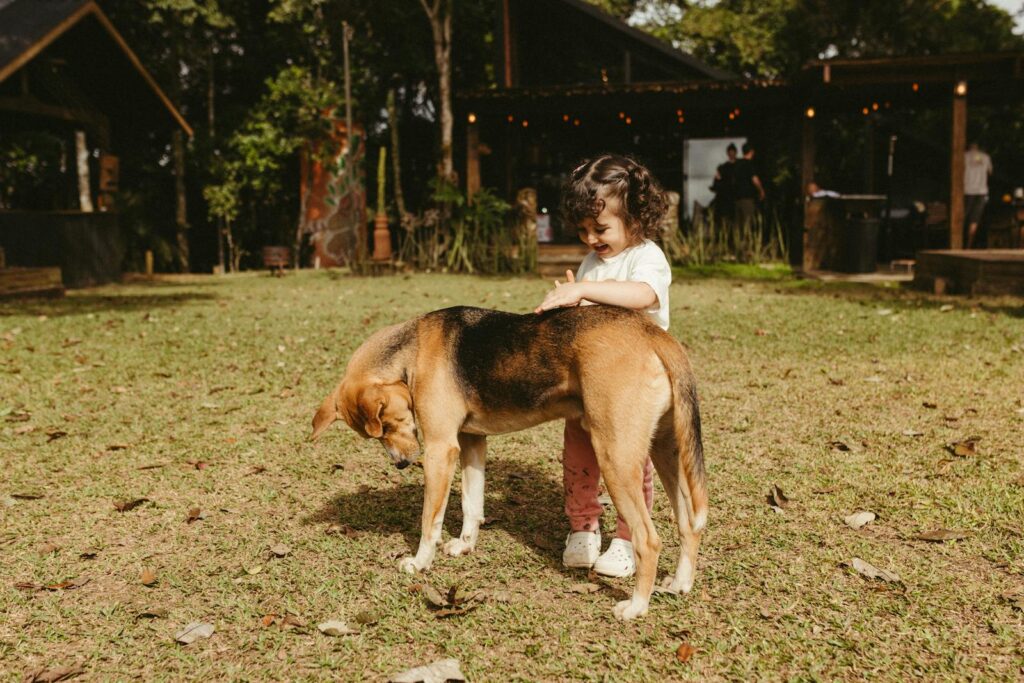
Teaching children and training pets to respect nature and other outdoor enthusiasts creates positive experiences for everyone sharing wild spaces. Establish clear expectations before departing, explaining to children why staying on designated trails protects fragile ecosystems and demonstrating proper waste management for both human and pet refuse. Practice the “leave no trace” principles together, making a game of spotting and collecting any trash you find (with appropriate safety precautions) and leaving natural objects like flowers, rocks, and sticks in place for others to enjoy. Train pets to respond reliably to recall commands before venturing into shared natural spaces, ensuring they won’t disturb wildlife or approach other hikers without invitation. When encountering other groups, teach children to step to the side of the trail, maintain control of pets, and offer friendly greetings that build community among outdoor enthusiasts. These lessons in outdoor citizenship benefit children far beyond the immediate adventure, instilling values of conservation and consideration that shape their relationship with nature throughout their lives.
Creating Learning Opportunities in Nature
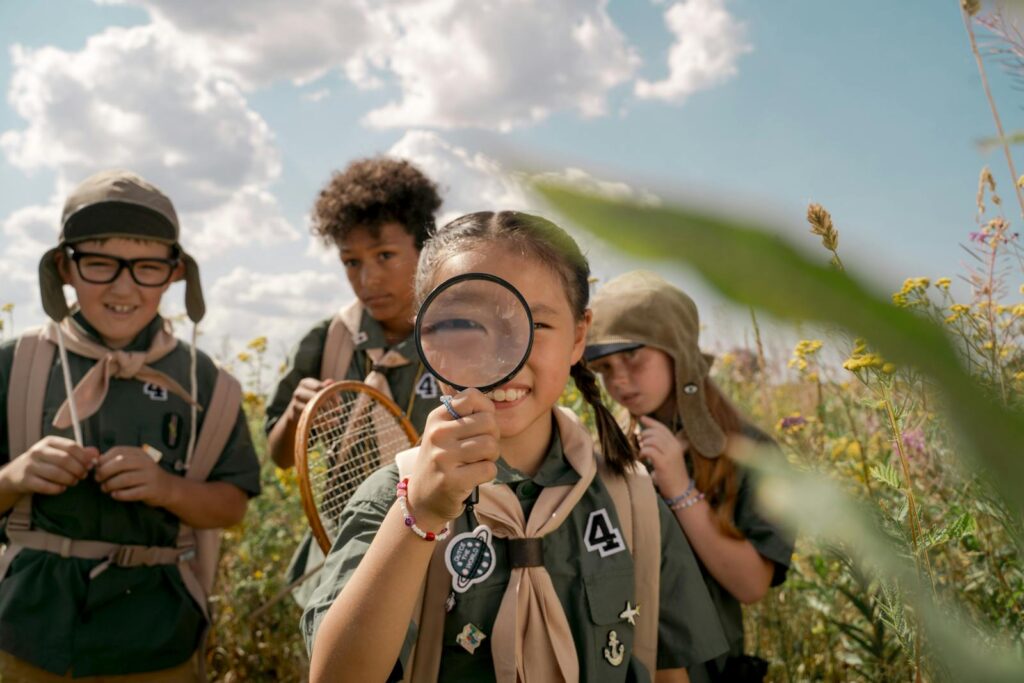
The natural world offers unparalleled educational experiences that engage children’s curiosity while also providing enrichment for pets. Before your trip, research the ecosystem you’ll be visiting to identify common plants, animals, and geological features, then create age-appropriate identification challenges like a nature bingo card with images of what you might encounter. Incorporate multisensory learning by encouraging children to listen for bird calls, feel different tree barks, or smell pine needles crushed between their fingers, creating memorable associations with scientific concepts. Pets participate in this learning environment through sensory enrichment as they encounter new smells, textures, and sounds that stimulate their minds and instincts in healthy ways. Bring simple tools like magnifying glasses, binoculars, and field guides that transform casual observation into deeper investigation, allowing children to make discoveries independently. These natural learning moments often spark questions that lead to conversations about ecology, biology, and conservation, turning a simple hike into an immersive educational experience that benefits cognitive development far more effectively than classroom instruction alone.
Handling Emergencies and First Aid Situations
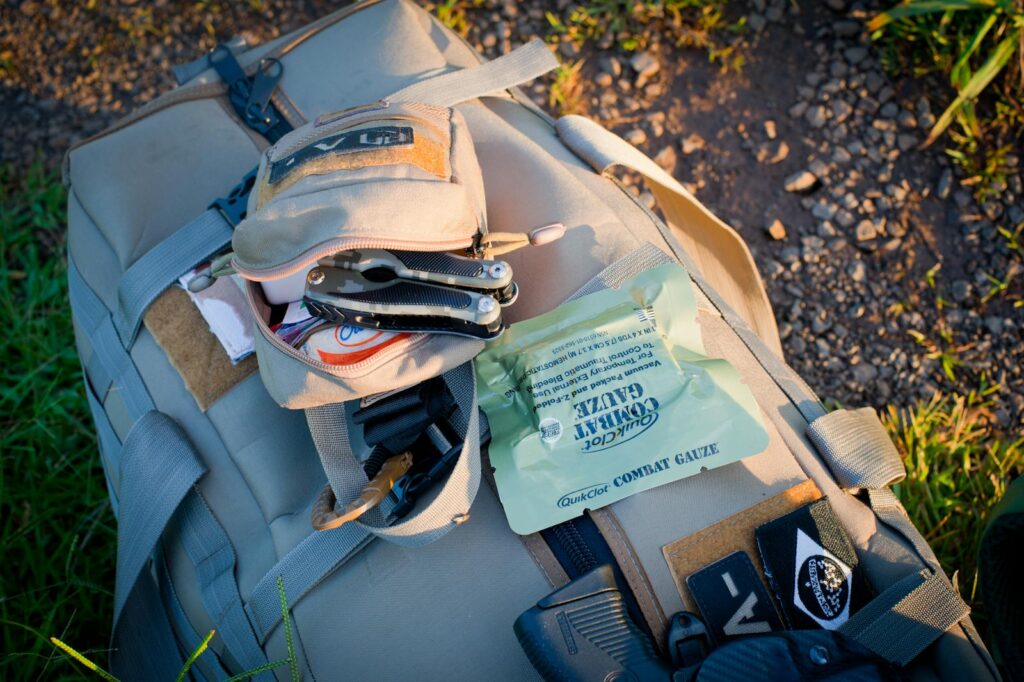
Preparing for potential emergencies requires specialized knowledge when children and pets are part of your adventure group. Before departing, research the nearest emergency veterinary facilities and human medical centers to your destination, saving their contact information and addresses in your phone and as printed copies. Customize your first aid kit to address the specific needs of your group members—including pediatric medications in appropriate dosages and pet-safe wound treatments that won’t cause harm if licked. Teach even young children basic emergency protocols, like how to use a whistle if separated from the group or how to identify safe waiting spots if they become lost. For pets, practice emergency carries appropriate to their size before you need them, and consider training that prepares them for unusual situations like crossing makeshift bridges or tolerating improvised muzzles if injured. The most effective emergency response begins with prevention—establish clear boundaries, maintain visual contact with children and pets, and regularly assess everyone’s physical condition to address small issues before they become serious problems requiring evacuation.
Camping Considerations for Families with Pets
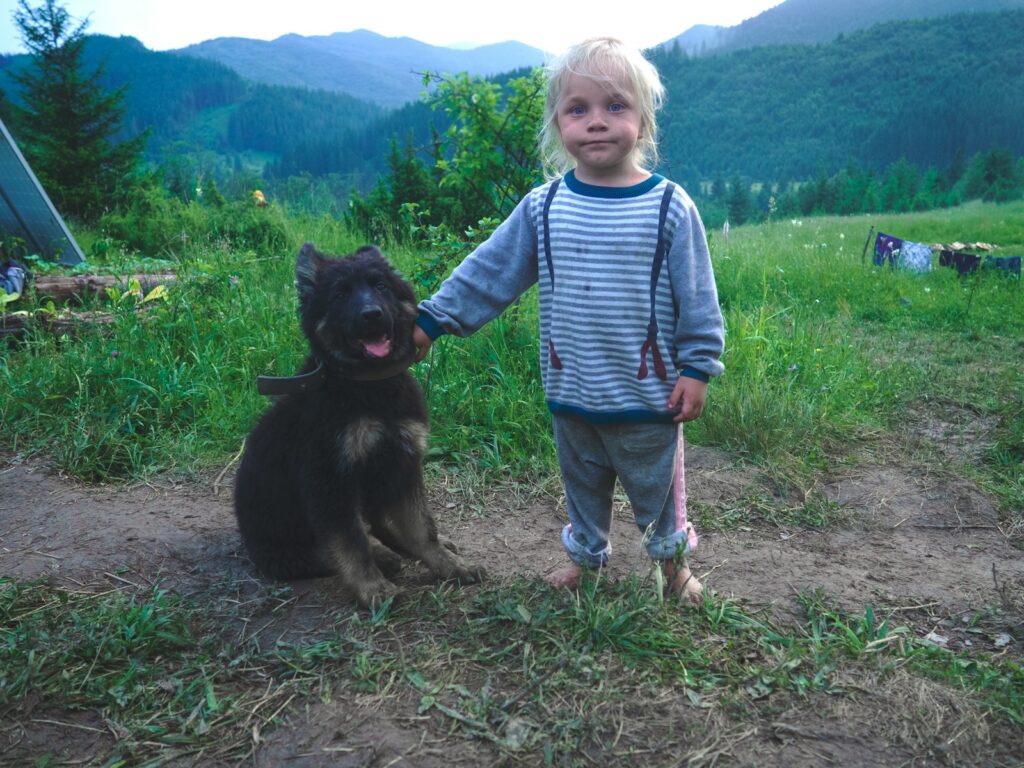
Overnight outdoor adventures require additional planning to ensure comfortable sleeping arrangements for all family members, including the four-legged ones. Select campgrounds that explicitly welcome pets, as many have specific pet-friendly sites with appropriate spacing and facilities. Consider sleeping arrangements carefully—many children feel more secure with pets in their tent, but this requires pets who are comfortable in close quarters and won’t become stressed in the unfamiliar environment. Create designated pet areas at your campsite with portable fencing or long leads secured to stable objects, allowing supervised freedom while preventing wandering that could lead to wildlife encounters or disturbances to neighboring campers. Evening and nighttime routines become especially important; plan for illuminated final bathroom walks for pets, secure food in wildlife-proof containers away from sleeping areas, and establish quiet activities like stargazing or storytelling that help both children and animals settle down after exciting days. For sound-sensitive pets, consider white noise options like a small battery-operated fan that can mask unfamiliar forest noises and help prevent midnight anxiety that disrupts everyone’s rest.
Socializing with Other Adventurers and Their Companions
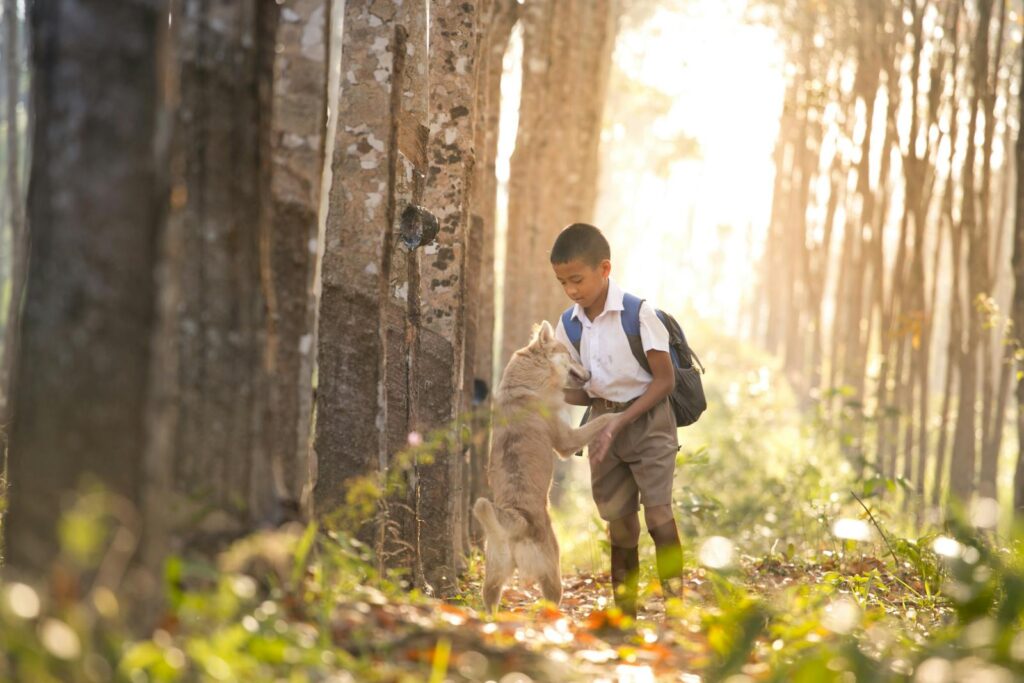
Encounters with other outdoor enthusiasts and their animals create opportunities for positive social experiences when managed thoughtfully. Teach children to ask permission before approaching unfamiliar dogs, demonstrating proper greeting techniques like offering a closed fist for sniffing rather than reaching over an animal’s head. Similarly, maintain control of your pets when others approach, using these moments to reinforce training commands like “sit” and “stay” that demonstrate your responsible pet ownership. Group camping areas and popular trails often bring together families with similar interests, creating natural opportunities for children to find playmates and pets to socialize in appropriate ways under supervision. These interactions build important social skills for both children and animals—learning to read body language, practicing gentle interaction, and respecting boundaries in a neutral environment away from territorial instincts. When everyone follows thoughtful socialization protocols, these spontaneous meetings often become highlights of the trip, sometimes even leading to lasting friendships between families who share outdoor passions.
Capturing Memories While Staying Present

Documenting your family adventures creates lasting mementos while also teaching children to observe their surroundings more carefully. Assign age-appropriate photography responsibilities, perhaps giving younger children durable cameras to capture their unique perspective while adults handle more technical shots, creating a diverse visual record of the experience. Establish media-free periods during your adventure where devices are stowed away, allowing everyone to fully immerse in sensory experiences without the distraction of documentation. Create traditions around memory collection, such as gathering a small natural item from each trip (where permitted) to create labeled memory jars, or maintaining a family adventure journal where each member contributes observations, drawings, or pressed flowers. Pets become part of these memories naturally, often stealing the spotlight in photographs or creating memorable moments that become family stories retold for years. Balance the desire to capture perfect images with the more important goal of being fully present for the experience itself, recognizing that the strongest memories often form when we’re completely engaged rather than viewing life through a viewfinder.
Planning for Rest and Recovery After Adventures

The conclusion of an outdoor expedition marks the beginning of an important recovery phase for both children and pets who have exerted themselves physically and mentally. Schedule a low-key day following significant outdoor adventures, allowing for extra sleep and relaxation as young bodies repair muscle tissue and process new experiences. Check children and pets thoroughly for ticks, splinters, or minor injuries that might have been overlooked during the excitement of the trip, addressing any findings promptly before they become more serious. Clean and properly store gear before the next outing, involving children in age-appropriate maintenance tasks that teach responsibility while also creating anticipation for future adventures. Watch for delayed reactions in both children and pets—sometimes the emotional processing of exciting experiences manifests as temporary behavior changes or sleep disruptions as their systems recalibrate to normal routines. These recovery periods offer perfect opportunities for reflecting on the experience together, discussing favorite moments, challenges overcome, and improvements for next time, cementing the educational and bonding benefits of your shared outdoor adventure.
The joy of outdoor adventures multiplies when shared with the entire family—children and pets included. With thoughtful preparation, flexible expectations, and a focus on creating positive experiences rather than covering maximum distance, these trips build lasting bonds and instill a love of nature that spans generations and species. By addressing the specific needs of your youngest adventurers—both human and animal—you transform potential challenges into opportunities for growth, learning, and connection. The memories created on these inclusive journeys often become touchstone moments in family narratives, referenced for years as “remember when” stories that strengthen your collective identity as an adventurous, nature-loving family. With each successful outing, you’ll find your systems becoming more refined, your children becoming more capable, and your pets becoming more confident outdoor companions, creating a positive cycle that leads to increasingly rewarding experiences in the natural world.

